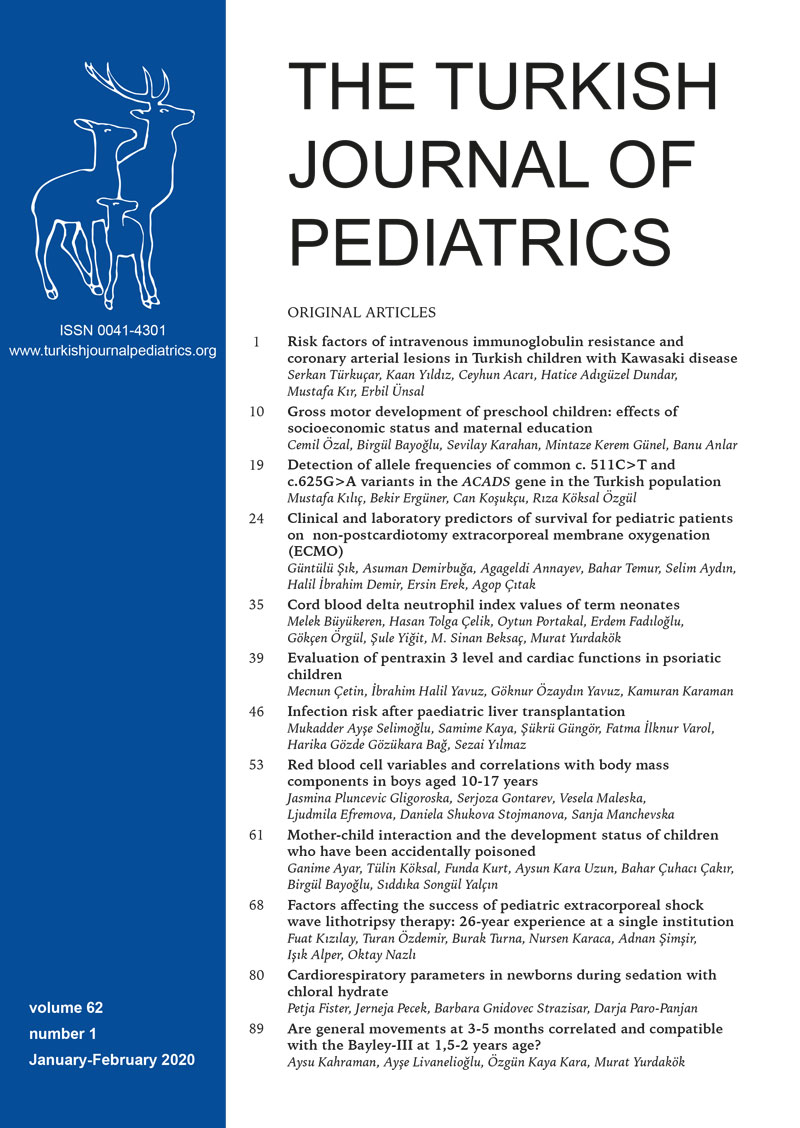Abstract
Infections after liver transplantation (LT), despite prophylactic therapy, are still important causes of morbidity and mortality in children. Although underlying disease and immunosuppression along with the complexity of LT procedure are the major predispositions to infections, there still might be under recognised factors predisposing infections in paediatric LT. In this study, we retrospectively analysed the risk factors of bacterial, viral, and fungal infections after LT in a series of 167 children (median =5 yr.). Of all children, 112 (67%) experienced infections: 93 (55.7%) bacterial, 56 (33.5%) viral and 15 (9%) fungal. Multilogistic regression analysis showed that the need of immunosuppressive switch increased total, bacterial, and viral infection risk 5.3, 2.5, and 2.5 times, respectively, (p=0.001, p=0.021, and p=0,019, respectively). Re-LT increased bacterial infection risk 4.2 times (p=0.040). Viral infection risk was 10 times higher in children who had more than two re-laparotomies (p=0,002). Children who had post-LT, cytomegalovirus (CMV) infection had 5.6 times increased risk for fungal infection (p=0.035). In conclusion, infection is still an important morbidity in paediatric LT and is in close relationship with other morbidities such as surgical complications. CMV infection, itself, is an independent risk factor for fungal infection.
Keywords: children, infection, liver transplantation
Copyright and license
Copyright © 2020 The Author(s). This is an open access article distributed under the Creative Commons Attribution License (CC BY), which permits unrestricted use, distribution, and reproduction in any medium or format, provided the original work is properly cited.














